Royal Australian Air Force
From Wikipedia, the free encyclopedia
"RAAF" redirects here. For other uses, see RAAF (disambiguation).
| Royal Australian Air Force | |
|---|---|
| The RAAF Ensign | |
| Founded | 31 March 1921 |
| Country | Australia |
| Branch | Air Force |
| Size | 15,430 personnel, 284 aircraft (2006) |
| Part of | Australian Defence Force |
| Air Force Headquarters | Canberra |
| Motto | Per Ardua ad Astra ('Through Struggle to the Stars') |
| Mascot | Kangaroo |
| Commanders | |
| Chief of Air Force | Air Marshal Mark Binskin |
| Deputy Chief of Air Force | Air Vice Marshal Geoff Brown |
| Air Commander Australia | Air Vice Marshal Mark Skidmore |
| Notable commanders | Sir Richard Williams |
| Insignia | |
| RAAF badge | |
| RAAF roundel | |
| RAAF low visibility roundel | |
| Aircraft flown | |
| Bomber | F-111 Aardvark |
| Electronic warfare | Boeing 737 AEW&C |
| Fighter | F/A-18 Hornet, F/A-18F Super Hornet |
| Patrol | AP-3C Orion |
| Reconnaissance | RF-111, Heron UAV |
| Trainer | PC-9, Hawk 127, B300 |
| Transport | C-130 Hercules, C-17 Globemaster III, Boeing 737, B300, Challenger 600 |
Serny, France, November 1918. A score board recording the claims for enemy aircraft destroyed by No. 80 Wing RAF from July-November 1918. The squadrons listed include No. 2 Squadron, Australian Flying Corps and No. 4 Squadron, AFC. The other columns are headed "In Flames", "Crashed", "O.O.C." (Out of Control), "Driven Down" and "Balloons Destroyed"."
Contents[hide] |
[edit] History
Main article: History of the Royal Australian Air Force
[edit] Formation, 1912
The RAAF traces its history back to the Imperial Conference held in London in 1911, where it was decided aviation should be developed within the Armed Forces of the British Empire. Australia implemented this decision, the only country to do so, by approving the establishment of the Central Flying School at Point Cook, Victoria on 22 October 1912.[citation needed][edit] World War I
Soon after the outbreak of World War I in 1914, the Australian Flying Corps sent aircraft to assist in capturing German colonies in what is now north-east New Guinea. These colonies surrendered quickly however, before the planes were even unpacked. The first operational flights did not occur until 27 May 1915, when the Mesopotamian Half Flight was called upon to assist the Indian Army in protecting British oil interests in what is now Iraq.The Corps later saw action in Egypt, Palestine and on the Western Front throughout the remainder of World War I. By the end of the war, four squadrons had seen active service.460 officers and 2,234 other ranks served in the AFC, whilst another 200 men served as aircrew in the British flying services.[5] Casualties included 175 dead, 111 wounded, 6 gassed and 40 captured.[6]
| Operational Squadrons | Training Squadrons |
|---|---|
| No. 1 Squadron AFC | No.5 (Training) Squadron AFC |
| No.2 Squadron AFC | No.6 (Training) Squadron AFC |
| No.3 Squadron AFC | No.7 (Training) Squadron AFC |
| No.4 Squadron AFC | No.8 (Training) Squadron AFC |
- A. H. "Harry" Cobby (29)
- Elwyn King (26)
- Alexander Pentland (23)
- Edgar McCloughry (21)
- Edgar Johnston (20)
- Andrew Cowper (19)
- Cedric Howell (19)
- Fred Holliday (17)
- Allan Hepburn (16)
- Francis Ryan Smith (16)
- John Rutherford Gordon (15)
- Roy Cecil Phillipps (15)
[edit] Inter-war period
The Australian Flying Corps remained part of the Australian Army until 1919, when it was disbanded along with the AIF. Although the Central Flying School continued to operate at Point Cook, military flying virtually ceased until 1920, when the Australian Air Corps was formed. The Australian Air Force was formed on 31 March 1921. King George V approved the prefix "Royal" in June 1921 and became effective on the 31 August 1921. The RAAF then became the second Royal air arm to be formed in the British Commonwealth, following the British Royal Air Force. When formed the RAAF had more aircraft then personnel, with 21 officers and 131 other ranks and 170 aircraft.[citation needed][edit] World War II
[edit] Europe and the Mediterranean
In 1939, just after the start of World War II, Australia joined the Empire Air Training Scheme, under which flight crews received basic training in Australia before travelling to Canada for advanced training. A total of 19 RAAF bomber, fighter, reconnaissance and other squadrons served initially in Britain, and/or with the Desert Air Force, in North Africa and the Mediterranean. About nine per cent of the personnel who served under British RAF commands in Europe and the Mediterranean were RAAF personnel.[7]With British manufacturing targeted by the Luftwaffe, the Australian government created the Department of Aircraft Production (DAP; later known as the Government Aircraft Factory) to supply Commonwealth air forces and the RAAF was eventually provided with large numbers of locally-built versions of British designs like the DAP Beaufort torpedo bomber.
In the European Theatre of World War II, RAAF personnel were especially notable in RAF Bomber Command: they represented two percent of all RAAF personnel during the war, but accounted for 23% of the total number killed in action. This statistic is further illustrated by the fact that No. 460 Squadron RAAF, mostly flying Avro Lancasters, had an official establishment of about 200 aircrew and yet had 1,018 combat deaths. The squadron was therefore effectively wiped out five times over.
[edit] Pacific War
Brewster Buffalo fighters, flown by many RAAF fighter pilots in the Malayan, Singapore and Dutch East Indies campaigns, as seen here being inspected at RAF Sembawang, Singapore.
In 1941 and early 1942, many RAAF airmen, including 21 and 453 Squadrons, saw action with the RAF Far East Command in the Malayan, Singapore and Dutch East Indies campaigns. Allied fighter pilots, in particular, performed well in the campaign, despite being outnumbered and the fact that many were allocated sub-standard examples of the Brewster Buffalo.
The devastating air raids on Darwin on 19 February 1942 drove the point home. Some RAAF squadrons were transferred from the northern hemisphere — although a substantial number remained there until the end of the war. Shortages of fighter and ground attack planes led to the acquisition of US-built P-40 Kittyhawks and the rapid design and manufacture of the first Australian fighter, the CAC Boomerang. RAAF Kittyhawks came to play a crucial role in the New Guinea and Solomon Islands campaigns, especially in operations like the Battle of Milne Bay. As a response to a possible Japanese chemical warfare threat the RAAF imported hundreds of thousands of chemical weapons into Australia.[8]
In the Battle of the Bismarck Sea, imported Bristol Beaufighters proved to be highly effective ground attack and maritime strike aircraft. Beaufighters were later made locally by the DAP. Although it was much bigger than Japanese fighters, the Beaufighter had the speed to outrun them.
The RAAF's heavy bomber force was predominantly 287 B-24 Liberators, which could bomb Japanese targets as far away as Borneo and the Philippines from airfields in Australia and New Guinea.
By late 1945, the RAAF had received or ordered about 500 P-51 Mustangs, for fighter/ground attack purposes. The Commonwealth Aircraft Corporation initially assembled US-made Mustangs, but later manufactured most of those used. The RAAF's main operational formation, the First Tactical Air Force, comprised more than 18,000 personnel and 20 squadrons; it had taken part in the Philippines and Borneo campaigns and was scheduled to participate in the invasion of the Japanese mainland, Operation Downfall. So too were the RAAF bomber squadrons in Europe, as part of the proposed Tiger Force. However, the war was brought to a sudden end by the US nuclear attacks on Japan. As a result of the Empire Air Training Scheme, about 20,000 Australian personnel had served with other Commonwealth air forces in Europe during World War II. A total of 216,900 men and women served in the RAAF, of whom 11,061 were killed in action.
[edit] Service since 1945
During the Berlin Airlift, in 1948-1949, an RAAF squadron of Dakotas aided the international effort to fly in supplies to the stricken city; two RAF York aircraft were also crewed by RAAF crews. Although a small part of the operation the RAAF contribution was significant, flying 2062 sorties and carrying 7030 tons of freight and 6964 passengers.[9]In the Korean War, from 1950–53, Mustangs from No. 77 Squadron (77 Sqn), stationed in Japan with the British Commonwealth Occupation Force, were among the first United Nations aircraft to be deployed, in ground support, combat air patrol, and escort missions. When the UN planes were confronted by MiG-15 jet fighters, 77 Sqn acquired Gloster Meteors, which enabled some success against the Soviet pilots flying for North Korea. However the MiGs were superior aircraft and the Meteors were relegated to ground support missions, as the North Koreans gained experience. The air force also operated transport aircraft during the conflict. No. 77 Squadron flew 18872 sorties, claiming the destruction of 3700 buildings, 1408 vehicles, 16 bridges, 98 railway carriages and an unknown number of enemy personnel. 3 MiG-15s were confirmed destroyed, and 2 others probably destroyed. RAAF casualties included 41 killed and 7 captured; 66 aircraft – 22 Mustangs and 44 Meteors – were lost.[10]
In the Malayan Emergency, from 1950–1960, 6 Lincolns from No. 1 Squadron (1 Sqn) and a flight of Dakotas from No. 38 Squadron (38 Sqn) took part in operations against the CTs as part of the Far East Air Force (FEAF). The Dakotas were used on cargo runs, in troop movement and in paratroop and leaflet drops with in Malaya. The Lincolns, operating from bases in Singapore and from Kuala Lumpur, formed the backbone of the air war against the CTs, conducting bombing missions against their jungle bases. Although results were often difficult to assess, they allowed the government to harass CT forces, attack their base camps when identified and keep them on the move. Later, in 1958, Canberra bombers from No. 2 Squadron (2 Sqn) were deployed to Malaya and took part in bombing missions against the CTs.[11]
During the Vietnam War, from 1966–72, the RAAF contributed squadrons of Caribou STOL transport aircraft (No. 35 Squadron), UH-1 Iroquois helicopters (No. 9 Squadron) and English Electric Canberra bombers (No. 2 Squadron). The Canberras flew 11,963 bombing sorties, and two aircraft were lost. One went missing during a bombing raid. The wreckage of the aircraft was recovered in April 2009, and the remains of Flying Officer Michael Herbert and Pilot Officer Robert Carver were found in late July 2009. The other was shot down by a surface to air missile, although both crew were rescued. They dropped 76389 bombs and were credited with 786 enemy personnel confirmed killed and a further 3390 estimated killed, 8637 structures, 15568 bunkers, 1267 sampans and 74 bridges destroyed.[12] RAAF transport aircraft also supported anti-communist ground forces. The UH-1 helicopters were used in many roles including Dustoff (medical evacuation) and Bushranger Gunships for armed support. RAAF casualties in Vietnam included 6 killed in action, 8 non-battle fatalities, 30 wounded in action and 30 injured.[13]
Military airlifts were conducted for a number of purposes in the intervening decades, such as the peacekeeping operations in East Timor from 1999.
Australia's combat aircraft were not used again in combat until the Iraq War in 2003, when 14 F/A-18s from No. 75 Squadron operated in the escort and ground attack roles, flying a total of 350 sorties and dropping 122 laser guided bombs.
Since August 2007, a detachment of No. 114 Mobile Control and Reporting Unit RAAF has been on active service at Kandahar Airfield in southern Afghanistan. Approximately 75 personnel deployed with the TPS 77 radar assigned with the responsibility to coordinate coalition combat air operations.[14]
[edit] Ranks and uniform
Main article: Ranks of the RAAF
The RAAF uses RAF-derived ranks for both officers and other ranks, with the following exceptions:- the RAAF does not use "Technician" ranks
- non-commissioned aircrew do not wear an eagle above their chevrons
- the insignia for Leading Aircraftman/Aircraftwoman (LAC/W) is a single chevron, rather than a two-bladed propeller
- there is no Senior Aircraftman/Aircraftwoman (SAC) rank.
[edit] Roundel
Originally, the Air Force used the existing red, white and blue Roundel of the Royal Air Force. However, during World War II, the inner red circle was removed after a No. 11 Squadron Catalina was mistaken for a Japanese aircraft by a US Navy Wildcat in the Pacific Theatre.[15]After the war, a range of options were proposed, including the Southern Cross, a boomerang, a sprig of wattle and the red kangaroo.
The current version of the RAAF Roundel was formally adopted on the 2nd of July, 1956. The Roundel exists of a white inner circle with a Red Kangaroo surrounded by a royal blue circle. The kangaroo faces left, except when used on aircraft or vehicles, when the kangaroo should always face the front. Low visibility versions exist of the roundel, with the white omitted and the red and blue replaced with light or dark grey. Australian Army helicopters sometimes use just the Kangaroo, either in black or in one of the camouflage colours.
[edit] Royal Australian Air Force Badge
The RAAF badge was accepted by the Chester Herald in 1939. The badge is composed of the Imperial Crown mounted on a circle featuring the words Royal Australian Air Force, beneath which scroll work displays the Latin motto (shared with the Royal Air Force) Per Ardua Ad Astra. Surmounting the badge is a wedge-tailed eagle. Per Ardua Ad Astra is attributed with the meaning “Through Struggle to the Stars” and is from Sir Henry Rider Haggard's novel The People of the Mist.[4][edit] Current strength
[edit] Aircraft
As of 2010, the following aircraft are operated by the RAAF: RAAF F-111C with its wings unswept in 2006.
RAAF F/A-18 Hornets from No. 77 Sqn.
RAAF C-17 Globemaster III parked at Melbourne Airport.
RAAF C-130J Super Hercules from No. 37 Sqn in 2008.
AP-3C Orion of No. 11 Sqn
| Aircraft | Origin | Type | Versions | In service[16] | Notes | |
|---|---|---|---|---|---|---|
| Fighter Aircraft | ||||||
| McDonnell Douglas F/A-18 Hornet | Fighter/Attack | Total F/A-18A F/A-18B | 71 54 17 | Built in Australia under licence from McDonnell Douglas. The F/A-18 fleet has been the subject of various upgrades since it entered service in the 1980s and remains capable, but fatigue issues mean that it may not remain a viable front-line air defence option until the planned retirement date of 2015, although this is being mitigated through a centre barrel replacement program[citation needed]. They will be replaced by 100 F-35 Lightning II. | ||
| F/A-18F Super Hornet | Fighter/Attack | F/A-18F | 11 | 24 F/A-18F aircraft will help avoid a gap in the Australian Air Force strike capability, between the retirement of the F-111 in 2010 and delivery of the F-35A.The F/A-18F Super Hornets will enter service from the end of 2010. The RAAF's first five Super Hornets arrived at their home base, RAAF Base Amberley in Queensland, on 26 March 2010, with the second batch of six arrived on 6 July 2010. | ||
| Strike/Reconnaissance | ||||||
| General Dynamics F-111 Aardvark | Strike | Total F-111C RF-111C | 21 17 4 | Mixture of the original long-range F-111C type, RF-111C reconnaissance variants, and ex-USAF F-111A (upgraded to most of the C specifications). These aircraft are due to be retired in 2010. 24 F/A-18F have been selected as an interim replacement. | ||
| Trainer | ||||||
| BAE Systems Hawk | Lead-in Fighter Trainer | Hawk 127 | 33 | Fighter jet conversion trainer. | ||
| Pilatus PC-9 | Advanced Trainer | PC-9 | 65 | Produced under licence in Australia by de Havilland Australia. | ||
| Beechcraft Super King Air | Navigational Trainer | B350 | 8 | |||
| Airborne Early Warning & Control | ||||||
| Boeing 737 AEW&C | Airborne Early Warning and Control (AEW&C) | Total 737 AEW&C To Deliver | 6 2 4 | 2 of the 737 AEW&C have been delivered (26/11/2009) and another 4 to be delivered over 2010/2011 | ||
| Aerial Refueling | ||||||
| Airbus A330 MRTT | Aerial Refueling (AAR) | Total KC-30A To Deliver | 5 0 5 | Aircraft currently undergoing final integration checks of the refuelling system prior to entry into service | ||
| Maritime Patrol | ||||||
| AP-3C Orion | Maritime Patrol/Strike | Total AP-3C P-3C | 21 18 3 | All aircraft to be withdrawn by 2018. Will probably be replaced by 8 Boeing P-8 Poseidon and 7 large UAVs.[citation needed] | ||
| UAV | ||||||
| IAI Heron | Reconnaissance/Surveillance | Heron 1 | 2 | Long term lease agreement with Canada.[17] | ||
| Transport | ||||||
| Boeing Business Jet | VIP transport | 737-700 BBJ | 2 | Long term lease, transport for government leaders and senior executives travelling on official business[18] | ||
| Boeing C-17 Globemaster III | Strategic Transport | C-17 | 4 | |||
| Bombardier Challenger 600 | VIP transport | CL 604 | 3 | |||
| Lockheed C-130 Hercules | Transport | C-130H | 8 | 4 have been retired.[19] | ||
| Lockheed C-130J Super Hercules | Transport | C-130J | 12[20] | |||
| Beechcraft Super King Air | Light Transport | B350 | 3 | Interim replacement for Caribou transports, transferred from Army Aviation. | ||
[edit] Small arms[21]
- L9A1/L9A3 Self Loading Pistol (Browning Hi-Power)
- Glock 19 Jet Aircrew Pistol
- Heckler & Koch MP5 Sub-Machine Gun
- Remington 870 shotgun
- F88 Austeyr rifle (Steyr AUG)
- SR-98 Sniper Rifle
- F89 Light Support Weapon (Minimi)
- MAG58 General Service Machine Gun
- M203 grenade launcher
[edit] Current flying squadrons
Main article: Structure of the RAAF
- No. 1 Squadron - General Dynamics F-111 (converting to F/A-18F Super Hornet) (Ground Attack)
- No. 2 Squadron - Boeing Wedgetail (AEW&C) (operational 2009)
- No. 3 Squadron - McDonnell Douglas F/A-18 Hornet (Air Defence)
- No. 4 Squadron - Pilatus PC9/A (Forward Air Controller Training)
- No. 6 Squadron - General Dynamics F-111 (converting to F/A-18F Super Hornet) (Ground Attack)
- No. 10 Squadron - Lockheed P-3C Orion (Maritime Patrol)
- No. 11 Squadron - Lockheed P-3C Orion (Maritime Patrol)
- No. 32 Squadron - Beechcraft King Air 350 (Air Combat Officer and Navy Observer Training)
- No. 33 Squadron - To be equipped with KC-30A Multi-Role Tanker Transports
- No. 34 Squadron - Boeing 737, Bombardier Challenger 604 (Transport)
- No. 36 Squadron - Boeing Globemaster III (Transport)
- No. 37 Squadron - Lockheed C-130H/C-130J-30 Hercules (Transport)
- No. 38 Squadron - Beechcraft King Air 350 (Transport)
- No. 75 Squadron - McDonnell Douglas F/A-18 Hornet (Air Defence)
- No. 76 Squadron - BAE Systems Hawk 127 (Lead-in Fighter Training/Close Support)
- No. 77 Squadron - McDonnell Douglas F/A-18 Hornet (Air Defence)
- No. 79 Squadron - BAE Systems Hawk 127 (Hawk Conversion/Close Support)
- No. 292 Squadron - Lockheed P-3C Orion (Training/Maritime Patrol)
- No. 2 OCU - McDonnell Douglas F/A-18 Hornet (Training & Type Conversion)
- No. 2 FTS - Pilatus PC9/A (Advanced Air Force and Navy Flying Training)
- CFS. Central Flying School - Pacific Aerospace CT4B, Pilatus PC9/A (Flying Instructor Training) Established March 1913
- ADFBFTS. Australian Defence Force Basic Flying Training School - Pacific Aerospace CT4B (Basic Navy, Army, and Air Force Flying Training)
[edit] Future equipment
A F-35 Lightning II at Edwards Air Force Base in the United States.
First Airbus A-330-200 MRTT for the RAAF taking off for a test flight from the Getafe Air Base (Spain).
- Up to 100 Lockheed Martin F-35A Lightning II (CTOL variant) — are scheduled to be delivered from 2014. In a first stage not fewer than 72 aircraft will be acquired to equip three operational squadrons. The remaining aircraft will be acquired in conjunction with the withdrawal of the F/A-18F Super Hornets after 2020 to ensure no gap in Australia's overall air combat capability occurs.
- 24 Boeing F/A-18F Super Hornets of which half will be wired to allow possible later conversion to the EA-18G Growler electronic warfare aircraft. The 24 F/A-18F aircraft will help avoid a gap in the Australian Air Force strike capability, between the retirement of the F-111 in 2010 and delivery of the F-35A. The F/A-18F Super Hornets will enter service from the end of 2010.[22]
- Eight Maritime patrol aircraft to replace Lockheed AP-3C Orions. Australia is participating in the development of the Boeing P-8 Poseidon to fill this role, but has not committed to purchase the aircraft.
- Seven large high-altitude, long-endurance UAVs to expand the surveillance of Australia's maritime approaches.
- Six Boeing Project Wedgetail AEW&C aircraft, including another single aircraft optioned, entering service in 2011.
- Five Airbus KC-30A Multi-Role Tanker Transports — to replace the dated Boeing 707s in aerial refueling and strategic transport roles entering service in 2010.
- 10 light tactical fixed-wing aircraft to replace the DHC-4 Caribou aircraft
- Two additional Lockheed C-130J Super Hercules aircraft
- Replacement aircraft for PC-9 training aircraft under Project AIR 5428, with a decision due between 2012–2015. Contenders include the Pilatus PC-21.[23]
[edit] Procurement Review
The Labor government made a pledge to review the procurement of both the Lockheed Martin F-35 Lightning II and the F/A-18F Super Hornet as part of a review of overall defence procurement. The then defence minister Joel Fitzgibbon made clear that "no option would be ruled out". This includes the possibility of purchasing the Lockheed Martin F-22 Raptor.[24] On 17 March 2008 Fitzgibbon confirmed that Australia would purchase 24 F/A-18F Super Hornets.[25]However, the Howard government ruled out purchase of the F-22, on the grounds that it is unlikely to be released for export, and does not have sufficient ground/maritime strike capacity. This assessment was supported by the Australian Strategic Policy Institute, a non-partisan, government-funded think-tank, which claimed that the F-22 "has insufficient multi-role capability at too high a price."
The US Congress upheld the ban on F-22 Raptor foreign sales during a joint conference on 27 September 2006. After talks in Washington in December 2006, the US DoD reported the F-22 would not be available for foreign sale.
Following the victory of the Australian Labor Party in the 2007 national election, the new government ordered a review of plans to procure the F-35 Lightning II and F/A-18E/F Super Hornet. This review will include an evaluation of the F-22's suitability for Australia; moreover, Defence Minister Joel Fitzgibbon has stated: "I intend to pursue American politicians for access to the Raptor". In February 2008, U.S. Defense Secretary Robert Gates said he had no objection to sale of the Raptor to Australia, but Congress would have to change the law.
In August 2008 reports in the press indicated that the RAAF is considering to purchase Boeing EA-18G Growler electronic warfare aircraft to complement the new F model purchases. Up to 12 Growlers are being considered. In February 2009 it was announced by the Australian Defence Minister that half of the proposed 24 Boeing F/A-18Fs being built for Australia, 12 will be additionally "wired" to provide the capability of being readily converted to electronic warfare/support aircraft, similar to EA-18G standard, without the costs involved with purchasing and maintaining a dedicated fleet of electronic warfare aircraft.[26][27]
[edit] Gallery of RAAF Aircraft
| RAAF PC-9 from No.2 FTS, on approach to Rottnest Island |

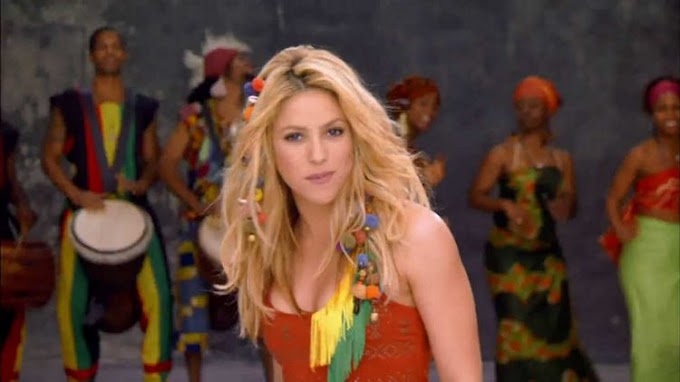

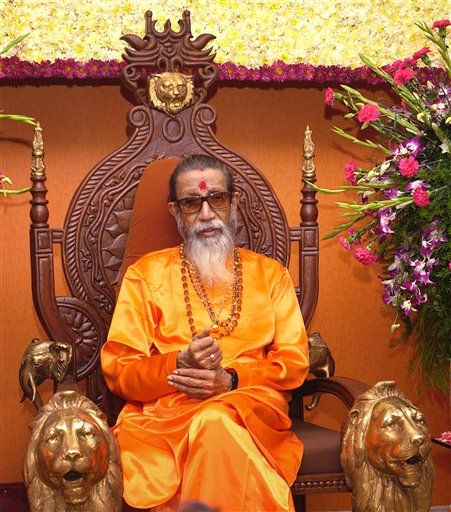
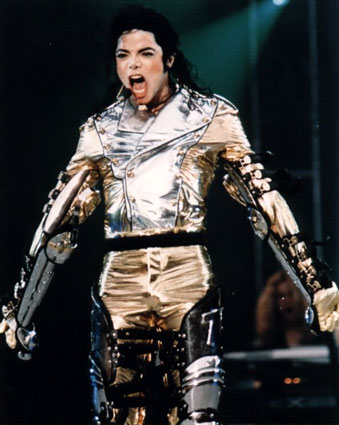
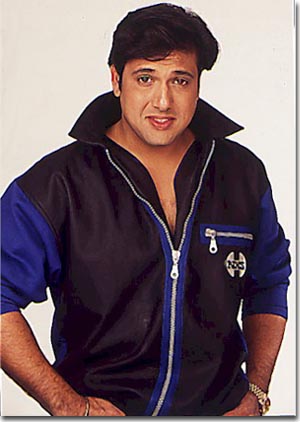


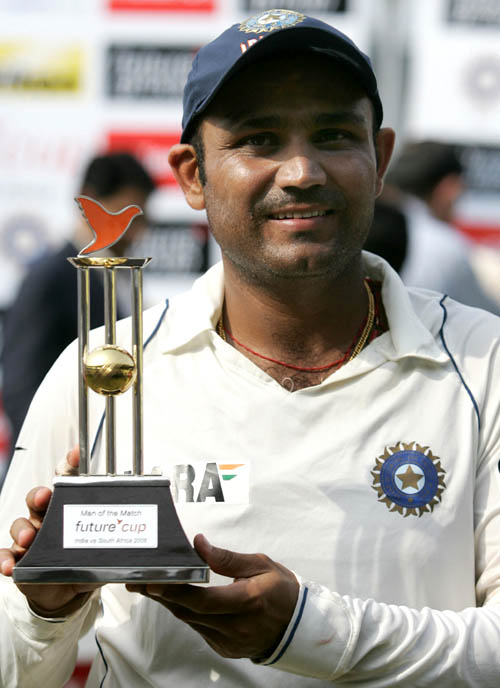


0 Comments